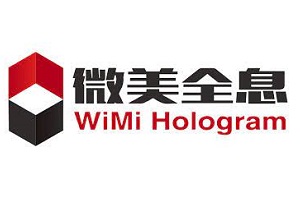
IoT connectivity solutions provider Eseye identified in a new ‘State of IoT Adoption’ report that companies are settling for sub-standard IoT (Internet of Things) connectivity performance, with only 1% of respondents achieving better than 98% connectivity levels on average across their device estates. In fact, only 16% of respondents are achieving more than 95% connectivity.
Mission-critical IoT devices require near-100% connectivity and the fact that companies are prepared to accept poor performance relative to the connectivity levels they could achieve is concerning. Moreover, imagine IoT health and medical devices losing their connection and the human impact that might have, or an electric vehicle (EV) charger failing because of ‘mediocre’ connectivity and the revenue lost as a result, not to mention stranded drivers.
Eseye focuses on supporting mission-critical IoT use cases, delivering global connectivity to devices where customers experience near 100% uptime for every device anywhere in the world.
The study, commissioned by Eseye, and undertaken by an independent research organisation, Opinion Matters, is the third annual State of IoT Adoption survey and the largest connectivity survey undertaken in the market, involving 1,009 senior decision-makers in the U.K. and the U.S. across five different vertical sectors – EV charging and smart grid, healthcare and medical devices, manufacturing, supply chain and logistics and smart vending. It examines the challenges and opportunities that are hindering and helping IoT adoption, compares IoT growth by market and vertical, and reveals budget forecasts for the next two years.
The report highlights that respondents appeared satisfied with their service despite experiencing connectivity levels below best practice. Businesses need to gain the technical knowledge to make the most of their IoT investment and are compromising their chances of success by settling for second-rate connectivity. While investment and device numbers are increasing, a failure to emphasise quality is holding the sector back.
Connectivity decisions should focus on long-term value
Nearly every respondent (95%) said that cost was an important aspect when choosing their connectivity provider. However, 71% admitted that cheap commodity SIM and data connectivity providers aren’t a good long-term investment. This highlights the importance that value plays in IoT connectivity decisions. An example of this is that nearly all respondents (89%) agreed that an end-to-end services programme that gives them access to IoT services under one roof would be beneficial to their business.
“It is shocking that businesses are prepared to compromise their goals and risk customer dissatisfaction or product failure because of sub-standard connectivity,” says Paul Marshall, co-founder and CCO, Eseye. “Our customers experience average connectivity rates in excess of 99% across all their global IoT devices. In our eyes anything less than 100% is simply not good enough, which has been our mantra since day one and remains at the core of Eseye’s offering.”
He also pointed out that the survey suggests IoT connectivity success is about more than just buying SIMs and data. “Breadth and depth of global coverage matters – how many cellular networks do you truly have access to? Is that coverage resilient and reliable enough for your business case? In order to achieve near 100% ubiquitous global IoT connectivity, a unique blend of network capabilities, hardware, device optimisation, and professional service expertise is required.”
Marshall continues, “Buyers may be unaware that their connectivity is subpar as they may not have a suitable benchmark, and are engaging in a false economy when cost is their top concern not value. The fact that buyers seem unaware that connectivity performance is even an issue clearly points to a need to better educate the market around what should be acceptable to deliver IoT success.”
Getting device design right – first time
The good news is that the majority of respondents (81%) expect the number of IoT devices in the field will increase over the next 18 months and nearly three quarters (72%) are planning to increase their IoT budgets in the next two years.
Operational failures are often down to the device, with over two-thirds (67%) of respondents saying that most of their IoT project failures are down to an issue at the device level. Almost three-quarters (72%) say that embedded firmware developers are hard to find and in short supply, for example.
Benchmarking project maturity against industry peers
Keen to measure the state of their IoT project, 9 out of 10 respondents said that it would be beneficial for their business if they could assess their IoT project’s level of maturity and compare where their project is at with their industry peers. Additionally, 95% of US respondents said it would be beneficial to assess IoT project maturity compared to 86% in the UK and 94% of US respondents said a monthly subscription service programme with all end-to-end IoT services under one roof would be beneficial, versus 84% in the UK.
“Businesses need to understand where they are to get to where they want to be. They also need to demand more from IoT service providers, and a service model that emphasises quality at an affordable price point,” says Nick Earle, CEO at Eseye. “They should be seeking end-to-end expertise incorporating device design, connectivity, and lasting value. At this crucial point in the sector’s development, second-best – in any aspect – is not good enough. Taking the time to assess a product’s maturity, and then investing in expertise to improve quality from first principles, is the necessary first step in today’s IoT projects.”
Earle continues, “A change of mindset is needed, where buyers understand the capabilities they are working with and invest in the right connectivity technology that will drive change for their unique business case. Increasing budgets allows IoT teams to invest in solving the problem by building connectivity-by-design into their products, rather than simply increasing the scale of inadequate devices. This survey demonstrates that there is a lot of demand and support for IoT, but, we need to capitalise on this by educating buyers and solving business problems rather than just throwing money at an inefficient model.”
Comment on this article below or via X: @IoTNow_
- SEO Powered Content & PR Distribution. Get Amplified Today.
- PlatoData.Network Vertical Generative Ai. Empower Yourself. Access Here.
- PlatoAiStream. Web3 Intelligence. Knowledge Amplified. Access Here.
- PlatoESG. Carbon, CleanTech, Energy, Environment, Solar, Waste Management. Access Here.
- PlatoHealth. Biotech and Clinical Trials Intelligence. Access Here.
- Source: https://www.iot-now.com/2023/10/10/137075-new-eseye-report-reveals-disconnect-in-iot-connectivity-performance/
- :has
- :is
- :not
- :where
- 1
- 10
- 9
- 95%
- a
- About
- Accept
- acceptable
- access
- Achieve
- achieving
- across
- Additionally
- admitted
- Adoption
- affordable
- against
- agreed
- All
- allows
- almost
- also
- an
- and
- annual
- any
- anything
- anywhere
- appeared
- ARE
- around
- article
- AS
- aspect
- assess
- At
- average
- back
- BE
- because
- been
- below
- Benchmark
- beneficial
- BEST
- Better
- Blend
- budget
- Budgets
- Building
- business
- businesses
- but
- buyers
- Buying
- by
- capabilities
- case
- cases
- cellular
- ceo
- chain
- challenges
- chances
- change
- charging
- cheap
- choosing
- clearly
- Co-founder
- commodity
- Companies
- compare
- compared
- compromise
- compromising
- Concern
- concerning
- connection
- Connectivity
- continues
- Core
- Cost
- could
- coverage
- crucial
- customer
- Customers
- data
- day
- decision-makers
- decisions
- deliver
- delivering
- Demand
- demonstrates
- depth
- Design
- Despite
- developers
- Development
- device
- Devices
- different
- do
- down
- drive
- drivers
- economy
- educate
- educating
- embedded
- end-to-end
- engaging
- enough
- EV
- Even
- Every
- Examines
- example
- excess
- expect
- experience
- experiencing
- expertise
- Eyes
- fact
- failing
- Failure
- false
- field
- Find
- First
- five
- Focus
- focuses
- For
- forecasts
- from
- Gain
- get
- gives
- Global
- Goals
- good
- Grid
- Growth
- Hard
- Hardware
- Have
- Health
- healthcare
- helping
- highlights
- holding
- How
- However
- HTTPS
- human
- identified
- if
- imagine
- Impact
- importance
- important
- important aspect
- improve
- in
- incorporating
- Increase
- increasing
- independent
- industry
- inefficient
- Internet
- internet of things
- into
- Invest
- investing
- investment
- involving
- iot
- Iot (internet of things)
- iot devices
- IoT use cases
- issue
- IT
- jpg
- just
- knowledge
- largest
- lasting
- less
- Level
- levels
- logistics
- long-term
- losing
- lost
- Lot
- Majority
- make
- Mantra
- manufacturing
- many
- Market
- Matters
- maturity
- May..
- measure
- medical
- medical devices
- mention
- might
- Mindset
- model
- money
- monthly
- monthly subscription
- months
- more
- Moreover
- most
- Near
- nearly
- necessary
- Need
- needed
- network
- networks
- New
- news
- next
- nick
- now
- number
- numbers
- of
- offering
- often
- on
- ONE
- only
- Opinion
- opportunities
- or
- order
- organisation
- our
- out
- over
- Paul
- peers
- performance
- planning
- plato
- Plato Data Intelligence
- PlatoData
- plays
- Point
- points
- poor
- practice
- prepared
- price
- principles
- Problem
- problems
- Product
- Products
- professional
- programme
- project
- projects
- provider
- providers
- quality
- Rates
- rather
- relative
- reliable
- remains
- report
- Reports
- require
- required
- research
- resilient
- respondents
- result
- Reveals
- revenue
- right
- Risk
- roof
- s
- Said
- satisfied
- satisfied with
- say
- saying
- says
- Scale
- sector
- Sectors
- seeking
- seem
- senior
- service
- service providers
- Services
- settling
- Short
- should
- SIM
- simply
- sims
- since
- smart
- Solutions
- Solving
- State
- Step
- Study
- subscription
- success
- Suggests
- suitable
- supply
- supply chain
- support
- Supporting
- Survey
- taking
- teams
- Technical
- Technology
- than
- that
- The
- The State
- the UK
- the world
- their
- Them
- then
- There.
- they
- things
- Third
- this
- three
- Throwing
- time
- to
- today’s
- top
- truly
- two
- two-thirds
- U.K.
- u.s.
- ubiquitous
- Uk
- under
- understand
- unique
- uptime
- us
- use
- value
- vehicle
- Versus
- vertical
- via
- want
- was
- we
- What
- when
- which
- while
- will
- with
- working
- world
- would
- X
- years
- you
- Your
- zephyrnet












